
NPS / Diane Renkin Insights from PaleoecologyAs we think about and prepare for the future, it is important to learn what we can from past episodes of climate change. The study of paleoecology has provided insight into prehistoric changes in the ecosystem, including evidence of ancient plant and animal movements that have been preserved in fossil records. Studies conducted in the last 20 years have provided critical insights into past climate change and its ecological consequences in the GYE. During the transition from glacial to Holocene conditions (ca. 14,000–9,000 years ago), temperatures rose at least 9°F–12°F (-13°C–11°C). As a result of rising temperatures, plant species expanded their ranges into newly available habitats forming new plant communities. Throughout the Holocene, climate variation of a lesser magnitude continued to occur, resulting in smaller shifts in species distributions and increased fire frequency during hotter and drier periods. Though the changes documented in the paleo record occurred over longer periods of time, drawing from the past of this region can help to gauge the potential for future changes. If future climate change is of similar magnitude to the changes that occurred in the past 9,000 years, it is likely that Yellowstone’s ecosystems will change to some extent, but probably not to any great degree. However, if the magnitude of future change is comparable to that of the glacial to Holocene transition, then enormous changes are possible—even likely. Heeding the Signs of ChangeAspenFindings from research focusing on aspen forests indicate a possible shift in the distribution of this important species may already be underway. By comparing documentation of aspen regeneration before and after the 1988 fires, experts found evidence suggesting that the sexual reproduction of aspen in the Rocky Mountains occurs primarily after large severe fires. Prior to 1988, aspen regeneration was understood to occur primarily via vegetative root sprouting. Aspen seedlings, rarely documented prior to the fires, were observed in 1988 burn areas, including areas where aspen had not been present before the fires, often many kilometers from pre-fire aspen stands. Aspen seedlings have persisted in many areas, and in some instances expanded into higher elevations since 1988. Meanwhile, aspen forests at the lowest elevations and on the driest sites have declined throughout much of the western U.S. in response to severe drought in the early 2000s. Research is ongoing to fully understand the processes at work, but the pattern is consistent with expectations of shifts in species ranges from a warming climate. Whitebark PineFive-needle pine trees are foundational species in high-elevation ecosystems across the West. For the sub-alpine species whitebark pine (Pinus albicaulis), warming temperatures may indirectly result in loss of suitable habitat, reducing its distribution within its historic range over the next century. Whitebark pine is associated with lower summer maximum temperatures and adequate springtime snowpack for survival. Modeling of whitebark pine habitat in the greater Yellowstone area predicts that suitable habitat will decrease over time and the species may only be able to survive at the highest elevations, although it is likely that there will remain microrefugia (small areas with suitable climates) of whitebark pine throughout the region. Given the ecological importance of whitebark pine, and that 98% of the species occurs on public lands, an interagency whitebark pine monitoring group, including the National Park Service, US Forest Service, Bureau of Land Management, and US Geological Survey, has been monitoring the status and trend of whitebark pine stands since 2004. Sagebrush SteppeSagebrush steppe is one of the most altered ecosystems in the intermountain West. Substantial sagebrush areas have been converted to agriculture, heavily grazed, and degraded through altered fire regimes and the invasion of nonnative plants. Changes in climate are expected to further alter fire regimes and increase invasive species in sagebrush steppe and low-elevation woodlands. Yellowstone National Park also has upland vegetation data that may be useful in addressing climate change responses in sagebrush-steppe and grassland systems and initiated a long-term monitoring program of sagebrush steppe habitats across the park in 2015. Alpine Vegetation and SoilsThe cold and relatively little-studied alpine ecosystems, are among those where climate change impacts are expected to be pronounced and detectable early on. The Greater Yellowstone and Rocky Mountain networks collaborated to implement alpine vegetation and soils monitoring in high elevation parks. National parks including Glacier, Yellowstone, Rocky Mountain, and Great Sand Dunes are now participants in the Global Observation Research Initiative in Alpine Environments (GLORIA) monitoring network. Monitoring includes sampling of vascular plants, soil temperature, air, and temperature at a set of four alpine summits along an elevation gradient. This set of sites span alpine environments from northwest Montana to southern Colorado. Information is available through the GLORIA website at http://www.gloria.ac.at/. 
GLORIA
Global Observation Research Initiative In Alpine Environments (GLORIA) is a world-wide long-term monitoring network with sites in the park. 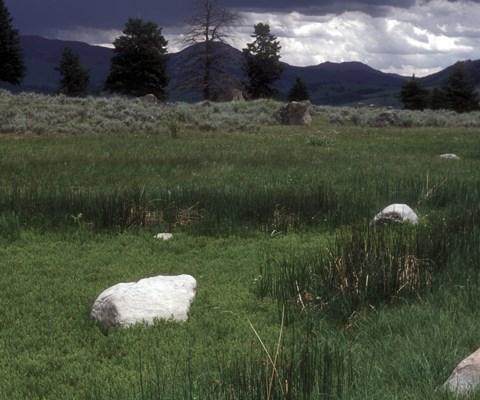
Jennifer Whipple WetlandsWetlands in Yellowstone are few and far between, and include small lakes and kettle ponds, which are already drying up. Scientists don’t know how much ground-water recharge they will need to recover. However, precipitation and snowpack will likely continue to decrease, which will continue to decrease surface and ground water—and thus the lakes and ponds may not recover. Recognizing that many of these small water basins are already drying, the park began to monitor groundwater hydrology in 2012 to understand the drivers and variability in groundwater flow patterns. The baseline information obtained from these select sites further informs the anticipated consequences under changing climatic conditions. As wetlands diminish, sedges, rushes, and other mesic (water-loving) plants will likely decline. In turn, amphibians and some birds will also lose habitat. Annual monitoring data suggest chronic repetition of dry, warm years, could lead to a decline in upwards of 40% of the region’s wetlands. This decline could ultimately reduce the distribution and abundance of wetland-dependent species, including boreal chorus frogs. Chorus frogs prefer shallow, ephemeral wetland habitats, making them especially vulnerable to climate change. Boreal chorus frog breeding habitat responded negatively to dry, warm years. Some sites where breeding was documented dried up prior to completion of amphibian metamorphosis, which can cause reproductive failure. The strong relationship between annual runoff, wetland inundation, and chorus frog breeding occurrence suggests increasingly difficult conditions for amphibians if projected drought increases occur. Declines in water levels and drying conditions could affect other species which are dependent on inundated wetlands for survival like, moose, beaver, trumpeter swans, and sandhill cranes. In addition, wetland loss is expected to reduce plant productivity, which in turn impacts the carbon sequestration potential of landscapes, affects hydrologic flow paths and water storage within floodplains and uplands, alters soundscapes, affects wildlife viewing opportunities, and potentially removing natural fire breaks important for managing low to moderate intensity wildfires. 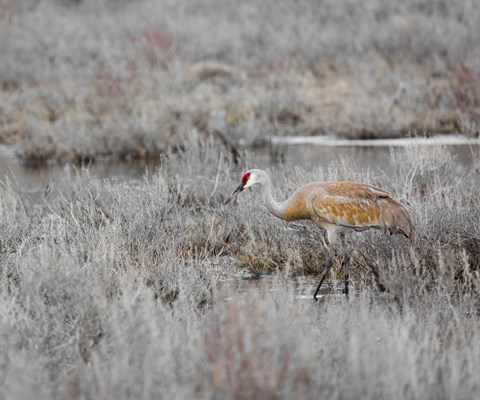
NPS / Neal Herbert WildlifeUnderstanding how climate change will influence wildlife requires a comprehensive understanding of the park’s climate system and how it interacts with both plants and animals. Clear predictions are difficult to make, but many current and potential impacts have been identified.
Climate change is anticipated to cause changes in the distribution and abundance of many species in Yellowstone. Thanks to the growing library of field studies and the availability of increasingly fine-tuned global climate models, ecologists are in a good position to deepen our understanding of how plants, animals, ecosystems, and whole landscapes respond to climate change, and consequently, to think about how the GYE is likely to change in the coming century. 
Changes in Yellowstone Climate
Scientists with the National Park Service and other organizations closely monitor variables that may reflect a changing climate. 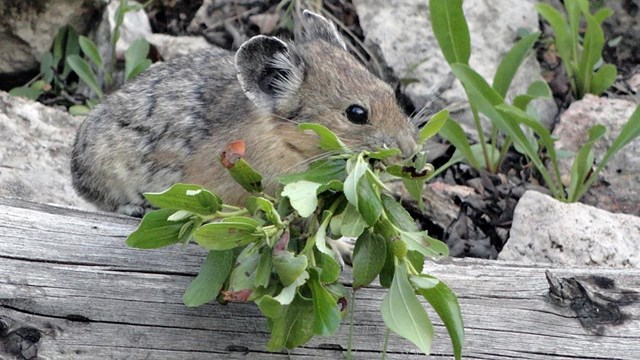
Climate Change
Yellowstone's climate is changing. A continued rise in temperature will fundamentally alter the ecosystem. Management and MonitoringMany national parks and other protected areas were set up to safeguard a wide range of plant and animal life assuming a certain set of climate conditions. As the climate drivers change, the natural ecosystem and human use of that landscape are bound to change. Even subtle shifts in climate can create substantial changes—nature will begin to rearrange itself, and our ability to protect and manage national parks will be challenged. In 2010, the National Park Service released its Climate Change Response Strategy. The Climate Change Response Strategy provides direction to our agency and employees to address the impacts of climate change. It describes goals and objectives to guide our actions under four integrated components: Science
The Greater Yellowstone Network (GRYN) conducts high-quality natural resource monitoring and collects robust inventory data to track changes in resources as they occur. In support of this reporting the interactive web site www.climateanalyzer.org provides climate data for many locations across the country. GRYN is part of the National Park Service High Elevation Climate Change Response Monitoring Program, along with the Rocky Mountain Network and the Upper Columbia Basin Network, created to measure changes in resources as a result of climate change. 
Greater Yellowstone Network
The Greater Yellowstone Network is one of 32 National Park Service Inventory and Monitoring networks that operate across the nation. Mitigation
The Green Parks Plan defines a collective vision and a strategic plan for sustainable operations in the National Park Service. The plan is framed around nine categories and sets ambitious goals to make the National Park Service a worldwide leader in sustainability:
The Climate Friendly Parks (CFP) Program, of which Yellowstone is a member, is one component of the NPS Green Parks Plan. The program supports parks in developing an integrated approach to address climate change through implementing sustainable practices throughout their operations. Since 2003, the program has assisted parks with:
The CFP Program includes over 120 member parks dedicated to reducing resource consumption, decreasing GHG emissions, and educating park staff and the public about climate change and sustainable initiatives taking place across the agency. Adaptation
Communication
OutlookThe complexity of the global climate system means that there is no one, “best” model for predicting the future climate everywhere on the earth. Instead, scientists use a group of different models that are all good at predicting some part of the answer. Usually, the greatest differences among predictions are not caused by the mathematical methods used to model the climate system. Most uncertainty is due to the difficulty in predicting what people will do. If climate scientists knew what choices humans were going to make about limiting greenhouse gas emissions, then their predictions about climate change would be much more certain. Climate change is generally not an easy or pleasant conversation piece. However, it is a conversation that we need to have, and a process we must continue to study. Humans will need to adapt, as will wildlife and ecosystems. Through better understanding, we may arrive at more informed decisions to help conserve and adapt to our changing environment. 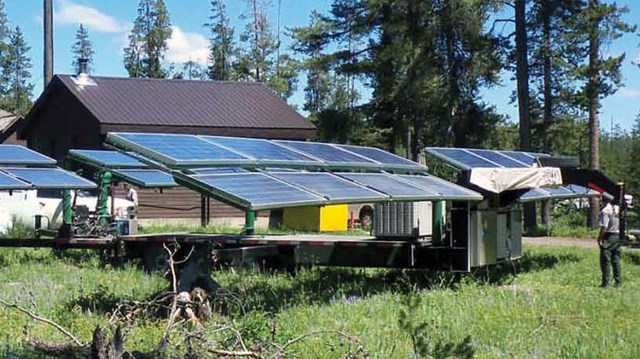
Conservation Measures
The solar panels at Bechler Ranger Station are one of many energy conservation projects parkwide. 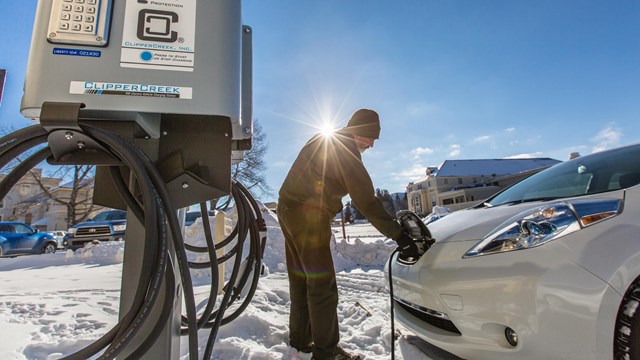
Sustainability
We strive to demonstrate and promote sound environmental stewardship. |
Last updated: April 18, 2025
